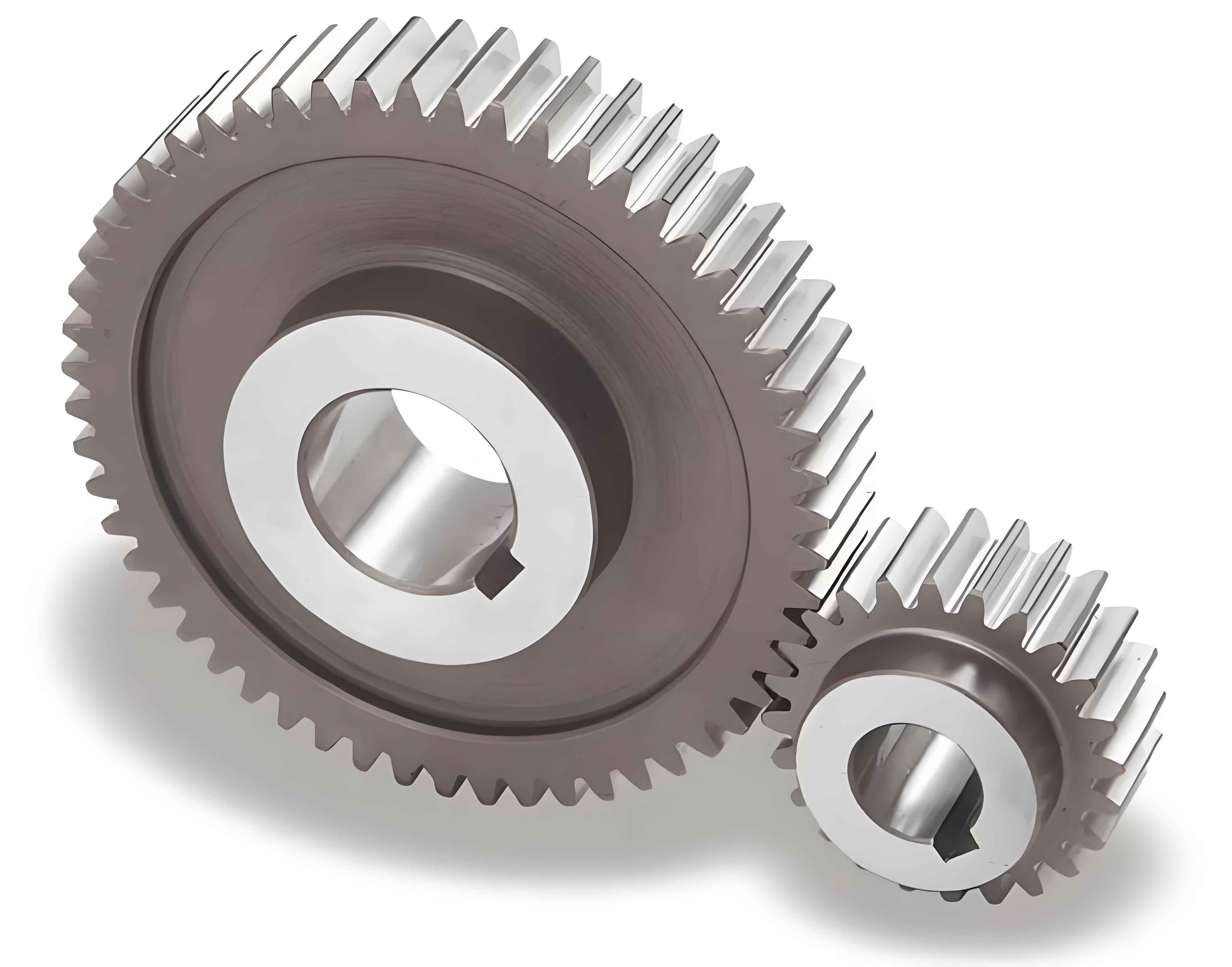
Wind turbines are critical components of the renewable energy infrastructure, converting wind energy into electrical power. Within these turbines, spur gear play a vital role in the gearbox, which increases the rotational speed from the rotor to the generator. Given the high stresses and demanding conditions these spur gear endure, implementing effective predictive maintenance strategies is essential to ensure their reliability and longevity. This article explores various predictive maintenance strategies for spur gear in wind turbines, including condition monitoring, data analysis, and advanced diagnostic techniques.
Introduction
Wind turbines are exposed to variable and often harsh environmental conditions, making their maintenance crucial for sustained operation. Spur gear in the gearbox are particularly susceptible to wear, fatigue, and failure due to the high loads they encounter. Predictive maintenance strategies aim to anticipate gear failures before they occur, reducing downtime and maintenance costs while enhancing the reliability of wind turbines.
Importance of Predictive Maintenance
- Minimizes Downtime: Early detection of potential issues prevents unexpected failures and reduces turbine downtime.
- Reduces Maintenance Costs: Scheduled maintenance based on gear condition can lower maintenance expenses compared to reactive maintenance.
- Extends Gear Life: Timely interventions based on predictive insights can prolong the operational life of spur gear.
- Improves Reliability: Continuous monitoring and data analysis improve the overall reliability of wind turbines.
Key Predictive Maintenance Strategies
- Condition Monitoring Systems
- Vibration Analysis
- Oil Analysis
- Thermography
- Acoustic Emission Analysis
- Advanced Data Analytics
Condition Monitoring Systems
Condition monitoring involves continuous or periodic measurement of various parameters to assess the health of spur gear. Commonly monitored parameters include vibration, temperature, and oil quality.
- Advantages:
- Real-time data collection.
- Early detection of anomalies.
- Disadvantages:
- Initial setup costs.
- Requires skilled personnel for data interpretation.
Vibration Analysis
Vibration analysis is a widely used technique for detecting gear faults. It involves measuring the vibration signals of spur gear and analyzing them for signs of wear, misalignment, or damage.
- Advantages:
- High sensitivity to spur gear faults.
- Can identify specific issues such as spurgear tooth damage.
- Disadvantages:
- Requires sophisticated equipment and expertise.
- May produce false positives if not correctly interpreted.
Oil Analysis
Oil analysis examines the lubricant for signs of contamination, wear particles, and chemical degradation. It provides insights into the condition of both the gears and the lubrication system.
- Advantages:
- Non-invasive and easy to perform.
- Provides information on both gear and lubrication health.
- Disadvantages:
- Requires regular sampling.
- Delayed results compared to real-time monitoring techniques.
Thermography
Thermography uses infrared cameras to detect temperature variations in gearboxes. Elevated temperatures can indicate issues such as friction, misalignment, or insufficient lubrication.
- Advantages:
- Non-contact method.
- Can detect hotspots and thermal anomalies.
- Disadvantages:
- Limited to surface temperature measurements.
- May not detect internal faults.
Acoustic Emission Analysis
Acoustic emission analysis monitors the high-frequency sound waves produced by spur gear operation. Changes in these emissions can indicate the onset of gear faults.
- Advantages:
- Sensitive to crack formation and propagation.
- Can detect early-stage damage.
- Disadvantages:
- Requires specialized equipment.
- Can be affected by background noise.
Advanced Data Analytics
Advanced data analytics involves using machine learning and artificial intelligence (AI) to analyze data from condition monitoring systems. These techniques can identify patterns and predict gear failures with high accuracy.
- Advantages:
- Can handle large volumes of data.
- Provides predictive insights with high accuracy.
- Disadvantages:
- Requires significant computational resources.
- Needs extensive training data for accurate predictions.
Comparative Analysis of Predictive Maintenance Techniques
| Strategy | Detection Sensitivity | Implementation Cost | Data Interpretation Complexity | Maintenance Scheduling Accuracy |
|---|---|---|---|---|
| Condition Monitoring | High | Medium | Medium | High |
| Vibration Analysis | Very High | High | High | Very High |
| Oil Analysis | Moderate | Low | Low | Moderate |
| Thermography | Moderate | Medium | Low | Moderate |
| Acoustic Emission Analysis | Very High | High | High | High |
| Advanced Data Analytics | Very High | High | Very High | Very High |
Case Study: Predictive Maintenance in Offshore Wind Turbines
A study conducted on offshore wind turbines demonstrated the effectiveness of integrating multiple predictive maintenance strategies. By combining vibration analysis, oil analysis, and advanced data analytics, the maintenance team was able to predict gear failures up to three months in advance. This approach reduced unexpected downtime by 25% and maintenance costs by 20%.
Future Trends in Predictive Maintenance
- Integration of IoT: Internet of Things (IoT) devices will enhance real-time monitoring and data collection, improving predictive maintenance accuracy.
- Machine Learning Algorithms: Continued development of machine learning algorithms will enable more precise failure predictions and maintenance scheduling.
- Remote Monitoring: Advances in remote monitoring technologies will allow for more efficient management of wind turbines, particularly in offshore environments.
Conclusion
Predictive maintenance strategies are essential for ensuring the reliability and efficiency of spur gear in wind turbines. By utilizing condition monitoring, vibration analysis, oil analysis, thermography, acoustic emission analysis, and advanced data analytics, operators can detect potential gear issues early and schedule maintenance proactively. This not only minimizes downtime and reduces maintenance costs but also extends the lifespan of critical components. As technology advances, predictive maintenance will continue to evolve, offering even greater accuracy and efficiency in managing wind turbine gear systems.
